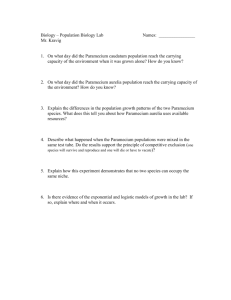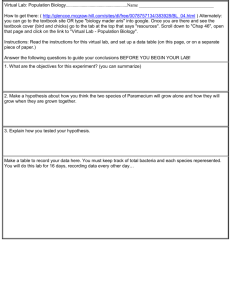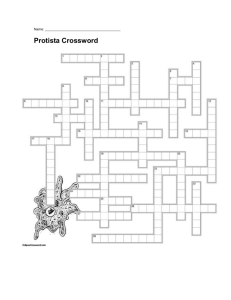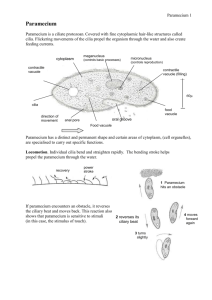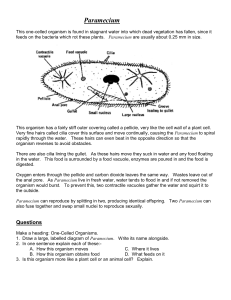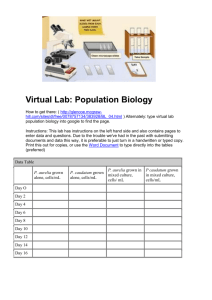Paramecium Coloring
advertisement
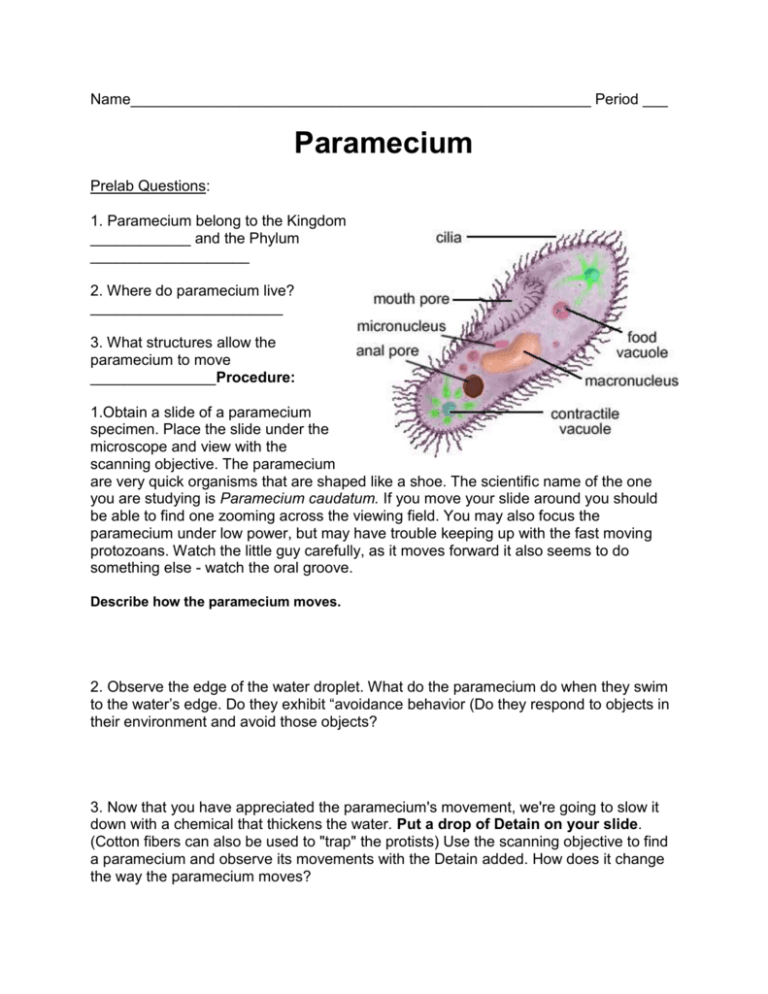
Name_______________________________________________________ Period ___ Paramecium Prelab Questions: 1. Paramecium belong to the Kingdom ____________ and the Phylum ___________________ 2. Where do paramecium live? _______________________ 3. What structures allow the paramecium to move _______________Procedure: 1.Obtain a slide of a paramecium specimen. Place the slide under the microscope and view with the scanning objective. The paramecium are very quick organisms that are shaped like a shoe. The scientific name of the one you are studying is Paramecium caudatum. If you move your slide around you should be able to find one zooming across the viewing field. You may also focus the paramecium under low power, but may have trouble keeping up with the fast moving protozoans. Watch the little guy carefully, as it moves forward it also seems to do something else - watch the oral groove. Describe how the paramecium moves. 2. Observe the edge of the water droplet. What do the paramecium do when they swim to the water’s edge. Do they exhibit “avoidance behavior (Do they respond to objects in their environment and avoid those objects? 3. Now that you have appreciated the paramecium's movement, we're going to slow it down with a chemical that thickens the water. Put a drop of Detain on your slide. (Cotton fibers can also be used to "trap" the protists) Use the scanning objective to find a paramecium and observe its movements with the Detain added. How does it change the way the paramecium moves? 4. Add a coverslip to your slide and see if you can focus on a paramecium using high power Look around the edges of the paramecium, can you see the cilia? Describe the movement of the cilia. 5. Sketch the paramecium below as it appears under high power. If you cannot see a clear specimen under high power, get a preserved slide from the front, these paramecium are frozen, dead and colored, making them pretty easy to see. Label the nucleus (which appears as a dark spot), the oral groove, the cytoplasm, cell membrane and cilia. 6. Compare the paramecium to the ameba. Be sure to include how they are alike and how they are different.
